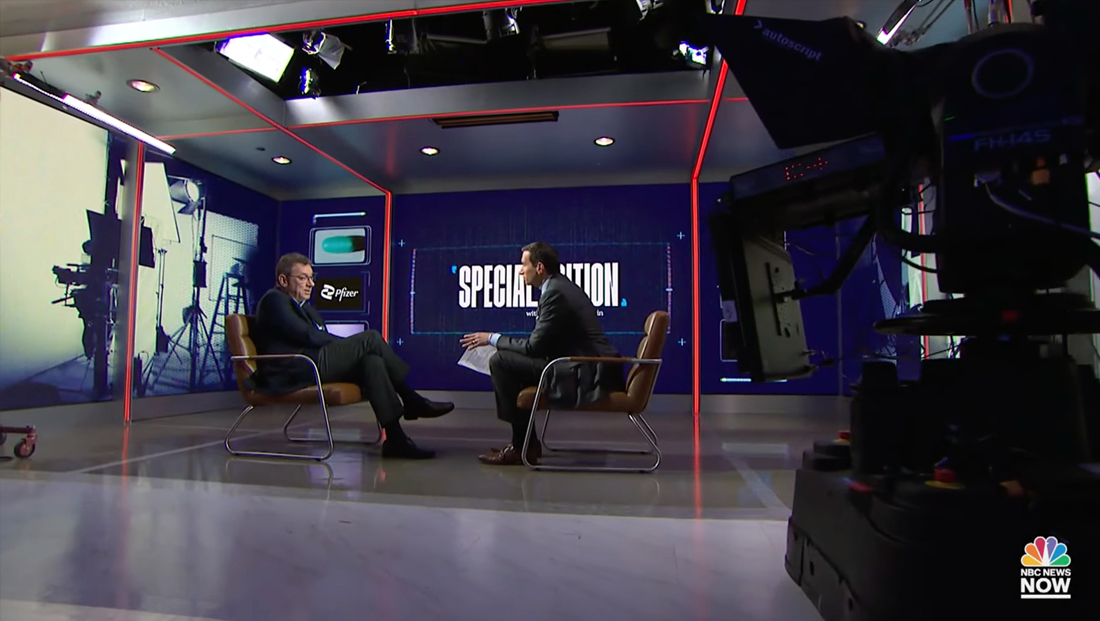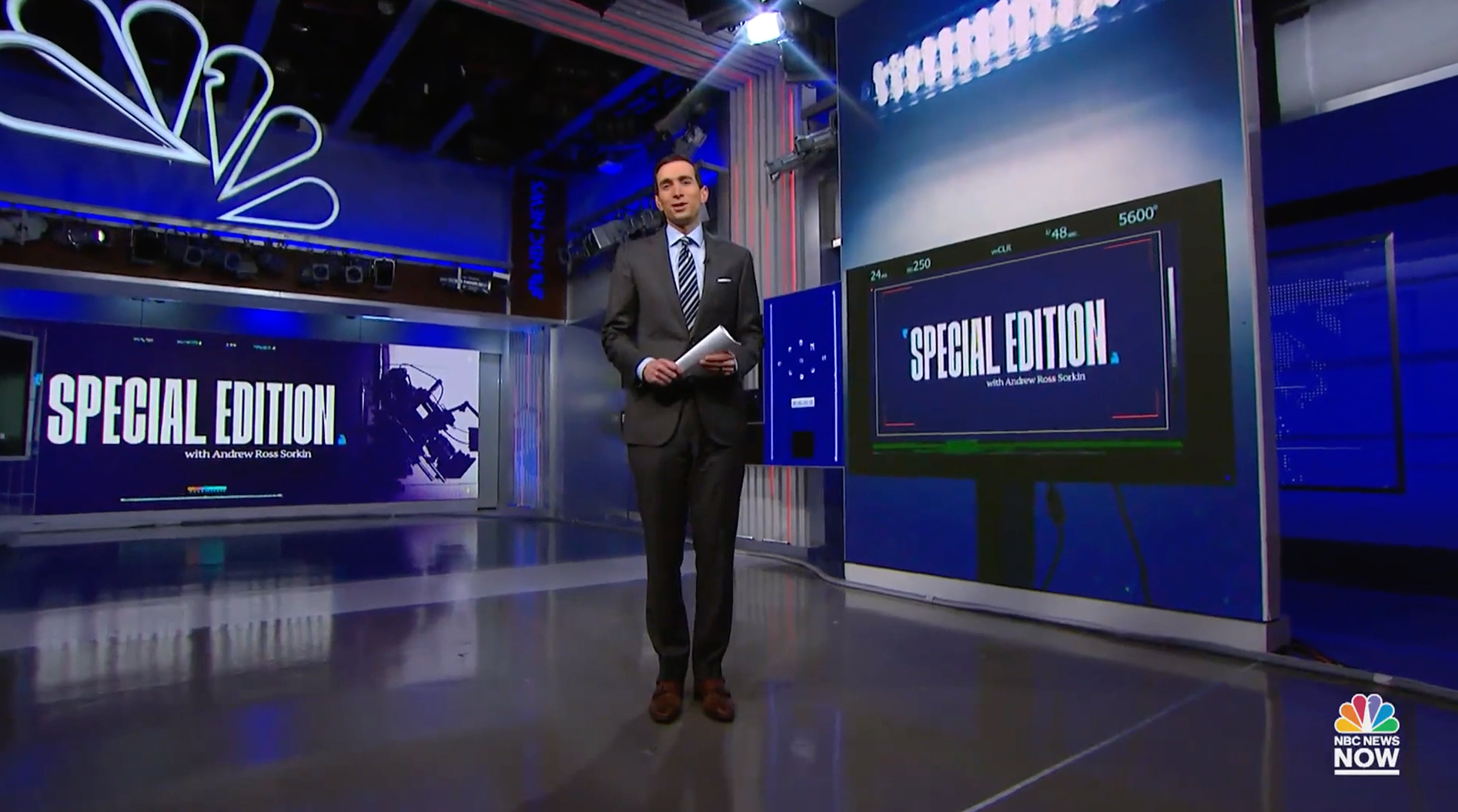‘Special Edition’ showcases videography gear, accents in dynamic look

Weekly insights on the technology, production and business decisions shaping media and broadcast. Free to access. Independent coverage. Unsubscribe anytime.
“Special Edition,” an interview series running on NBC News Now featuring CNBC anchor Andrew Ross Sorkin, repurposes Studio 3A’s set originally built for “NBC Nightly News” with a look that’s centered on TV production gear and videography.
Studio 3A has been used for a variety of productions on NBC and MSNBC over the years, and that’s increased since “Nightly” moved to Studio 1A. It recently became used on a regular basis when “NBC News Daily” launched in September.

“Special Edition,” meanwhile, starts off with Sorkin standing near the video tower along the west wall, though the large video wall on the south side of the space is also visible showcasing the show’s logo.
The show uses a condensed typeface with single quotation marks in the upper left and lower right, with the latter one being flipped upside down, likely a nod to the interview-centric nature of the offering.
The logo also includes Sorkin’s name in a serif below and is typically framed with camera viewfinder-inspired accents with a dark blue-violet color palette.
Other on-set graphics include sharp monochromatic views of cameras, lighting, tripods and other gear, with the images often depicting the elaborate setups that networks often use for sit-down interviews. Other video elements, including the space’s jigsaw LED panels, feature additional photography-inspired accents.
Many of the wide shots used during the show purposeful show the studio’s camera and lighting, continuing the theme found in the video wall backgrounds and logo.

The show open includes a collection of imagery that relate to the guest of each episode, while combing numerous effects and accents inspired by videography, including a circular accent that doubles as both a lens and NBC peacock.
It also features a gritty view of a return monitor showing Sorkin in the process of sitting down in a chair in the foreground, while the scene also plays out for real in the background.
For the crux of the show, Sorkin moves over the vista video wall alcove, a three-sided space that includes seamless video walls with narrow edge-lit columns and ceiling elements.
These are colored red for “Special,” while the LED displays a mix of topical graphics in photography-inspired frames on either side of the north wall with the logo in the middle segment.
Camera left and right, which are the backgrounds behind Sorkin and his guest’s one-shots, feature the largest examples of imagery depicting a shoot setup. For texture, the video wall graphics feature a pattern of red, blue and green (the three colors that make up TV every pixel on TV screens), a look that could have been inspired by gained-up video or noise artifacts.
Both Sorkin and his guest sit on simple chairs with metal frames in a rather unpleasant shade of brown.

The show features lower third insert graphics to identify the guest, but they are used sparingly — no constant on-screen banners with talking points or quotes here.
The design uses white text set in another font without any background with the blue single quotation marks. The lower thirds animate in using several effects that including blocks of color and glitch-style effects while the typography changes sizes as it enters.
A similar look is also used for a “coming up” notation that’s used before going to breaks, which use a fullscreen deep blue-purple wipe with the pattern texture.

While the one-shots remained mostly fixed during the interview, the show makes heavy use of on-camera moves for two-shots, again with many of them purposefully showing cameras and lighting. The moves and framing change throughout each episode, making these segments a dynamic feel.

There is also the option for various fullscreen graphics, some of them using the blue color palette, while others use black with a rough textured background and the option to use viewfinder framing elements to draw the eye in to the content being displayed, such as a tweet.
The west side of Studio 3A is roughly in the same spot where Studio 3C once stood and is sometimes referred to as Studio 3AW to distinguish it from the larger studio to the east that’s home to MSNBC.



tags
Andrew Ross Sorkin, CNBC, NBC News Now, Special Edition, Studio 3A, Studio 3AW
categories
Branding, Broadcast Design, Broadcast Industry News, Featured, Graphics, Streaming, Video Walls